Accept all cookies Accept only essential cookies See our Cookie Notice

About ESA
The European Space Agency (ESA) is Europe’s gateway to space. Its mission is to shape the development of Europe’s space capability and ensure that investment in space continues to deliver benefits to the citizens of Europe and the world.
Highlights
ESA - United space in Europe
This is ESA ESA facts Member States & Cooperating States Funding Director General Top management For Member State Delegations European vision European Space Policy ESA & EU Space Councils Responsibility & Sustainability Annual Report Calendar of meetings Corporate newsEstablishments & sites
ESA Headquarters ESA ESTEC ESA ESOC ESA ESRIN ESA EAC ESA ESAC Europe's Spaceport ESA ESEC ESA ECSAT Brussels Office Washington OfficeWorking with ESA
Business with ESA ESA Commercialisation Gateway Law at ESA Careers Cyber resilience at ESA IT at ESA Newsroom Partnerships Merchandising Licence Education Open Space Innovation Platform Integrity and Reporting Administrative Tribunal Health and SafetyMore about ESA
History ESA Historical Archives Exhibitions Publications Art & Culture ESA Merchandise Kids Diversity ESA Brand Centre ESA ChampionsLatest
Space in Member States
Find out more about space activities in our 23 Member States, and understand how ESA works together with their national agencies, institutions and organisations.
Science & Exploration
Exploring our Solar System and unlocking the secrets of the Universe
Go to topicAstronauts
Missions
Juice Euclid Webb Solar Orbiter BepiColombo Gaia ExoMars Cheops Exoplanet missions More missionsActivities
International Space Station Orion service module Gateway Concordia Caves & Pangaea BenefitsLatest
Space Safety
Protecting life and infrastructure on Earth and in orbit
Go to topicAsteroids
Asteroids and Planetary Defence Asteroid danger explained Flyeye telescope: asteroid detection Hera mission: asteroid deflection Near-Earth Object Coordination CentreSpace junk
About space debris Space debris by the numbers Space Environment Report In space refuelling, refurbishing and removingSafety from space
Clean Space ecodesign Zero Debris Technologies Space for Earth Supporting Sustainable DevelopmentLatest
Applications
Using space to benefit citizens and meet future challenges on Earth
Go to topicObserving the Earth
Observing the Earth Future EO Copernicus Meteorology Space for our climate Satellite missionsCommercialisation
ESA Commercialisation Gateway Open Space Innovation Platform Business Incubation ESA Space SolutionsLatest
Enabling & Support
Making space accessible and developing the technologies for the future
Go to topicBuilding missions
Space Engineering and Technology Test centre Laboratories Concurrent Design Facility Preparing for the future Shaping the Future Discovery and Preparation Advanced Concepts TeamSpace transportation
Space Transportation Ariane Vega Space Rider Future space transportation Boost! Europe's Spaceport Launches from Europe's Spaceport from 2012Latest
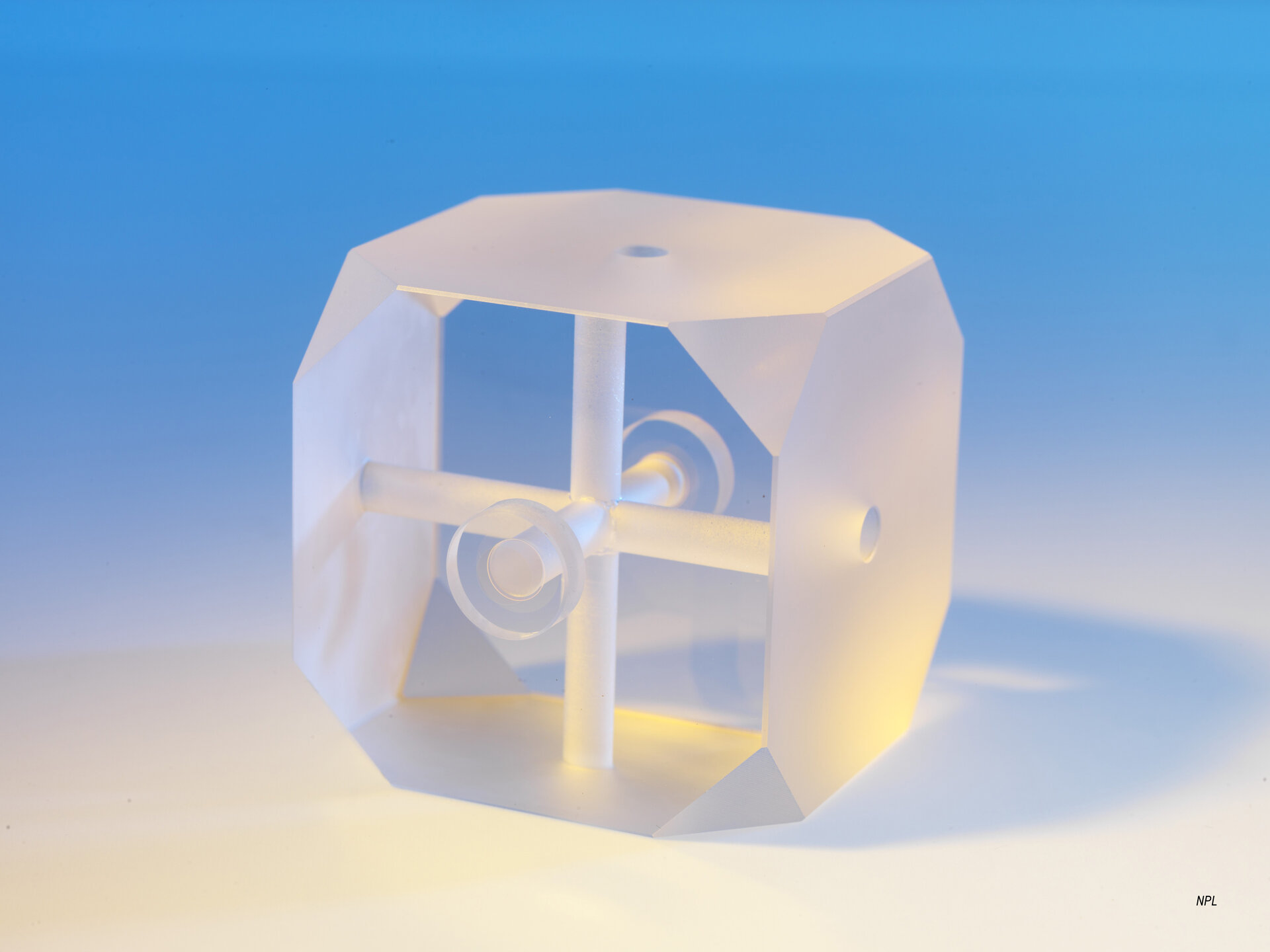
Optical stabilising reference cavity
Thank you for liking
You have already liked this page, you can only like it once!
What looks like an abstract sculpture is actually the laser equivalent of a tuning fork – to serve a new generation of space instruments.
“This is an ‘optical stabilising reference cavity’, through which laser light is contained between a pair of super-polished mirrors kept a precise distance apart,” explains ESA physicist Eamonn Murphy.
”This laser light is then used to lock the frequency of the laser – and prevent it drifting – in a similar principle to a tuning fork, as applied to musical instruments.”
Such lasers will serve at the heart of next-generation ‘optical atomic clocks’, improving on current microwave atomic clocks used for timing and navigation, as well as enabling ultrasensitive gravity detectors.
This 5 cm cube cavity was developed for ESA by the National Physical Laboratory, NPL, which is the national measurement institute of the UK, specialised in extremely precise measuring techniques.
NPL used ultra-low expansion glass, resistant to changing size with temperature. A pathway was then drilled through the middle, with mirrors placed at either end.
The working version of the cavity is enclosed in a vacuum chamber to prevent any disturbance by air molecules, followed by a thermal shroud to maintain its temperature to within a tiny fraction of a degree. It can then be placed on an acoustic damping baseplate to further isolate it from any microvibrations.
This effort began back in 2009 with three parallel projects within ESA’s Basic Technology Research Programme, working with the national measuring institutes France and Germany as well as the UK.
Expertise and elements from all the resulting designs will soon be incorporated into a new working prototype, supported through ESA’s General Support Technology Programme, which finalises hardware for space.
“Our aim is to deliver a six order-of-magnitude improvement in laser linewidth from initial laser performance,” adds Eamonn, “to maintain a stable drift-free frequency, insensitive to even minute accelerations.”
-
CREDIT
NPL -
LICENCE
ESA Standard Licence
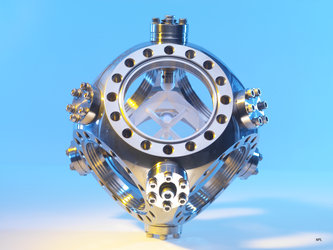
Optical stabilising reference cavity within vacuum chamber
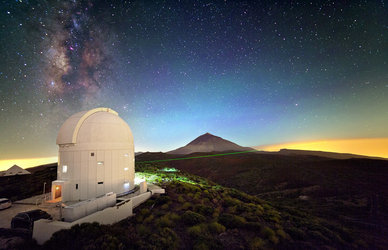
Laser from Optical Ground Station on Tenerife
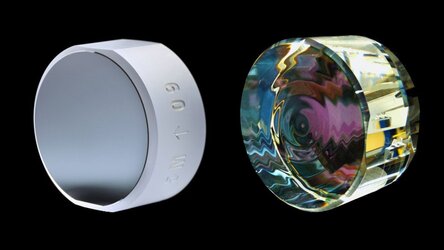
New materials for laser supermirrors
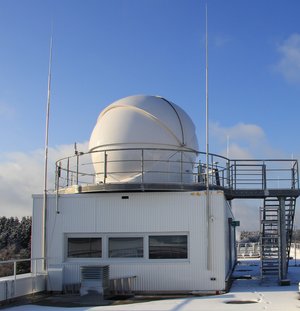
Optical ground station















 Germany
Germany
 Austria
Austria
 Belgium
Belgium
 Denmark
Denmark
 Spain
Spain
 Estonia
Estonia
 Finland
Finland
 France
France
 Greece
Greece
 Hungary
Hungary
 Ireland
Ireland
 Italy
Italy
 Luxembourg
Luxembourg
 Norway
Norway
 The Netherlands
The Netherlands
 Poland
Poland
 Portugal
Portugal
 Czechia
Czechia
 Romania
Romania
 United Kingdom
United Kingdom
 Slovenia
Slovenia
 Sweden
Sweden
 Switzerland
Switzerland
























